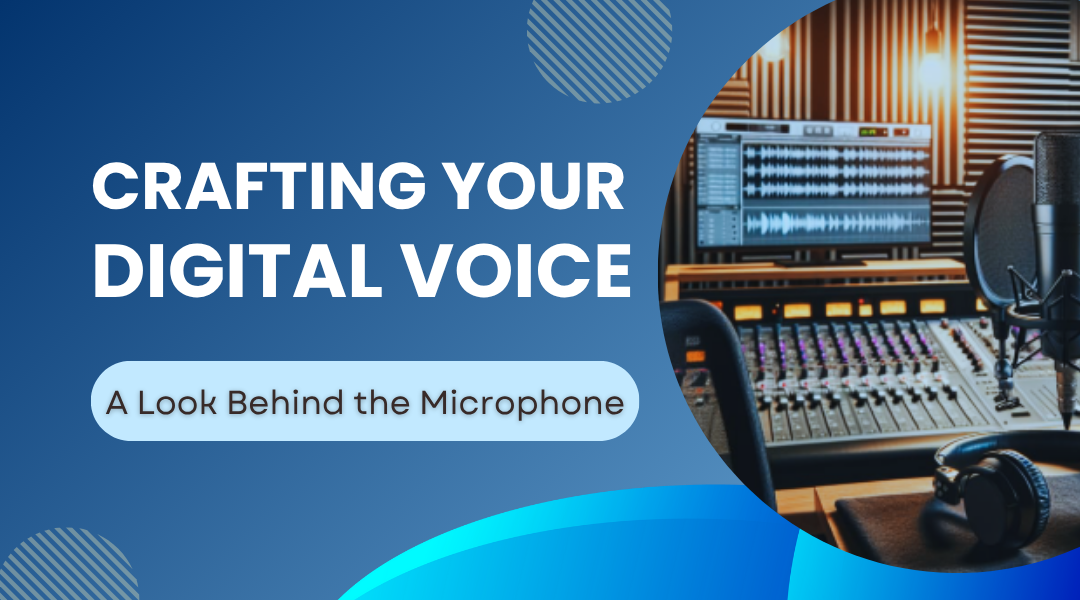Ever wondered how a computer can not only say your words but actually become you? We’re talking about capturing the unique melody of your speech, the rhythm of your thoughts, even those thoughtful pauses and signature sighs. This isn’t about simple playback; it’s about building a vocal twin.
This process, once the domain of tech giants, is now something you can do from your desk. Let’s pull back the curtain on how it really works.
The Foundation: Your Vocal Blueprint
Think of the AI as an incredibly attentive student, and your voice is the lesson. For it to learn properly, it needs clear, consistent examples. We’re not just after the words you say, but the way you say them.
- The “What”: You need clean audio recordings of you speaking. The gold standard is a quiet environment with a decent microphone—even a simple USB podcast mic will do. What you don’t want are clips filled with background chatter, passing traffic, or music.
- The “How Much”:
- To dip your toes in, about 3 to 5 minutes of clear audio can create a surprisingly functional clone.
- For a voice that’s rich, reliable, and ready for professional work like a documentary or a long-form podcast, aim for 30 minutes to an hour of material.
Imagine this: You’re a history podcaster. Instead of recording new audio, you gather your best, clearest segments from past episodes, strip away any background music, and feed that into the system. That’s your training library.
Quality Over Quantity: The Art of the Sample
The old computer science adage holds true here: garbage in, garbage out. Throwing a messy, inconsistent audio dump at the system will only give you a messy, unconvincing clone. Here’s how to get it right.
- Clarity is King: The single most important factor is pristine audio. Record in a closet full of clothes or a quiet home office—anywhere soft and echo-free. A recording from your phone while you’re walking down the street will teach the AI all the wrong things.
- Embrace Emotional Range: Don’t just read the dictionary in a monotone. Your voice has a personality—let it shine through. Mix in different types of speech:
- Excited: “You won’t believe what happened next!”
- Soothing: “Now, take a deep breath and let’s begin.”
- Curious: “But what if we looked at it from another angle?”
- Short phrases and longer, complex sentences.
This variety teaches the AI the full spectrum of your vocal identity, not just a flat, robotic version of it.
The Training Journey: From Audio to Avatar
So you’ve uploaded your pristine vocal samples. What happens next inside the machine? Most modern platforms follow a fascinating, multi-stage process to build your digital voice.
- Stage 1: The Clean-Up
First, the system scrubs your audio. It evens out the volume levels, filters out any subtle background hiss, and chops long recordings into manageable, sentence-length clips. Think of this as a sound engineer meticulously preparing a master tape. - Stage 2: The Vocal Dissection
This is where the real learning begins. The AI doesn’t “hear” like we do; it analyzes. It maps the intricate details of your voice: the frequency of your pitch, the speed and cadence of your delivery, and the unique texture of your vocal cords. It’s learning your acoustic DNA. - Stage 3: Building the Model
Here, the system uses a neural network—a web of algorithms loosely modeled on the human brain—to create a complex mathematical representation of your voice. This is the “sculpting” phase, where your digital voice twin is carved from data. Depending on the length of your audio, this can take from a few minutes to a couple of hours. - Stage 4: Giving it a Voice
The final, and most magical, step is synthesis. You type any sentence you like, and the model brings it to life. It consults the blueprint it built and generates new speech that never existed before, but carries all your vocal fingerprints.
Picture this: David, a busy chef, clones his voice for his cooking app. When he needs to add a new recipe step, he doesn’t have to rush to a studio. He simply types, “Now, fold in the chocolate gently, you don’t want to overwork the batter,” and his AI voice delivers the line with his characteristic warmth and authority.
Conclusion: The Human Behind the Code
While the technology is complex, the principle is beautifully simple. A voice model is a reflection of the data it’s fed. The more care, clarity, and character you pour into the initial recordings, the more authentic and lifelike the result will be.
It’s a powerful collaboration between human nuance and machine learning, transforming the unique sound of a single voice into a dynamic, reusable asset. The future of voice isn’t just about machines talking; it’s about them learning to speak with our voices, preserving the personality and passion that makes each voice worth hearing.
